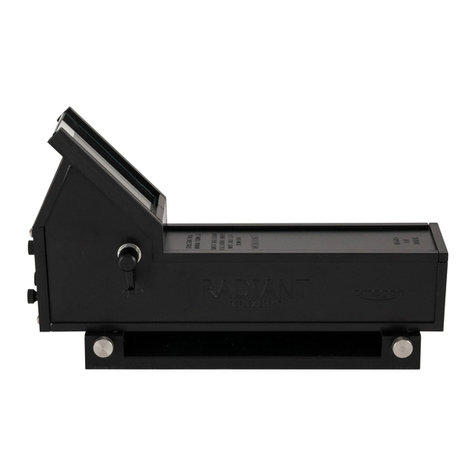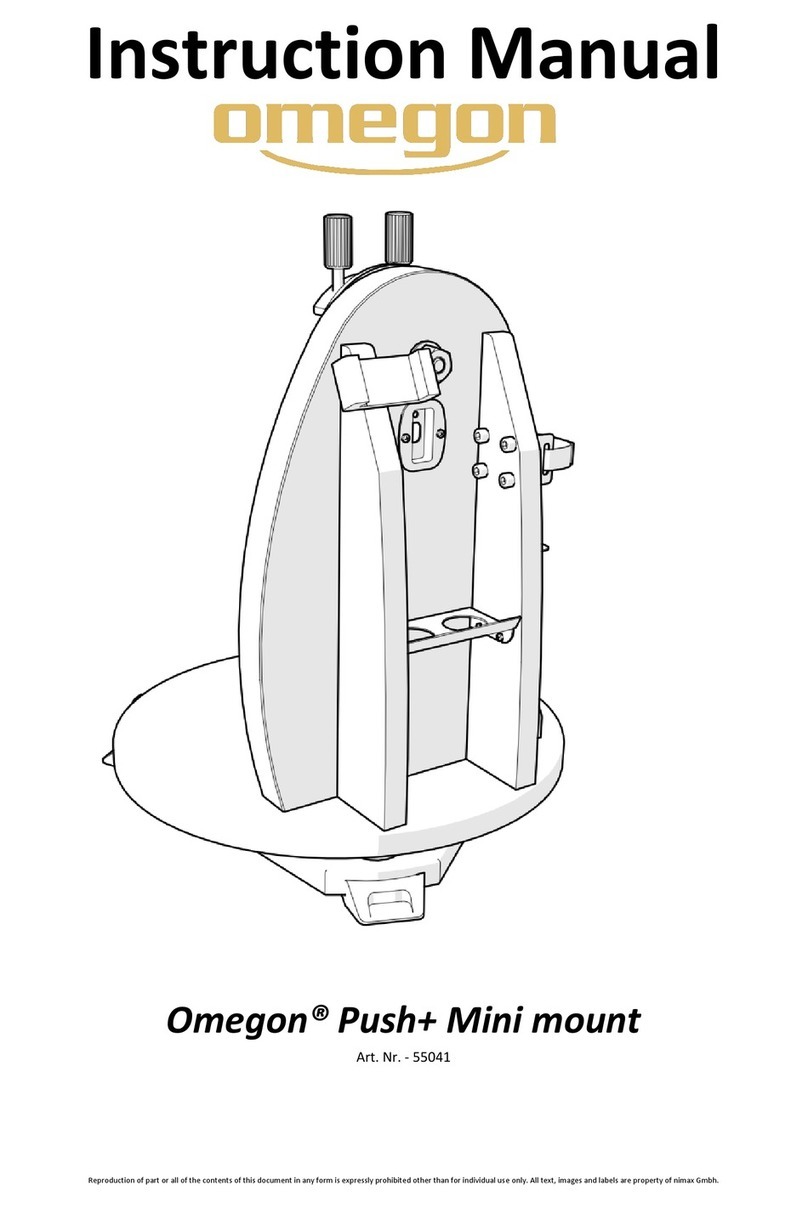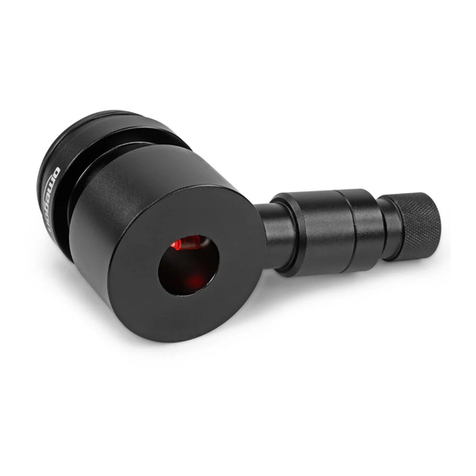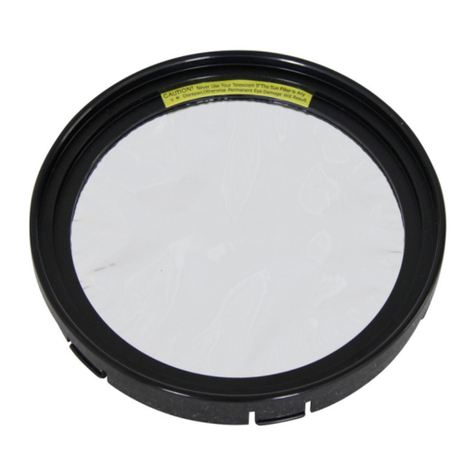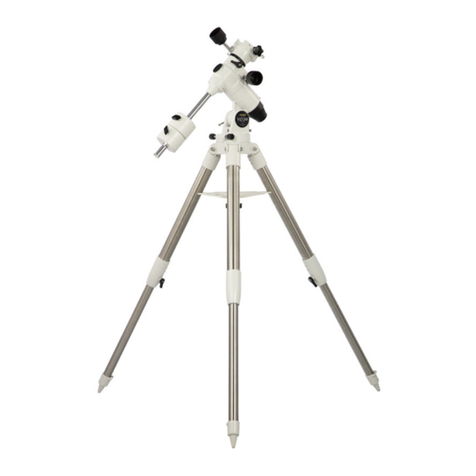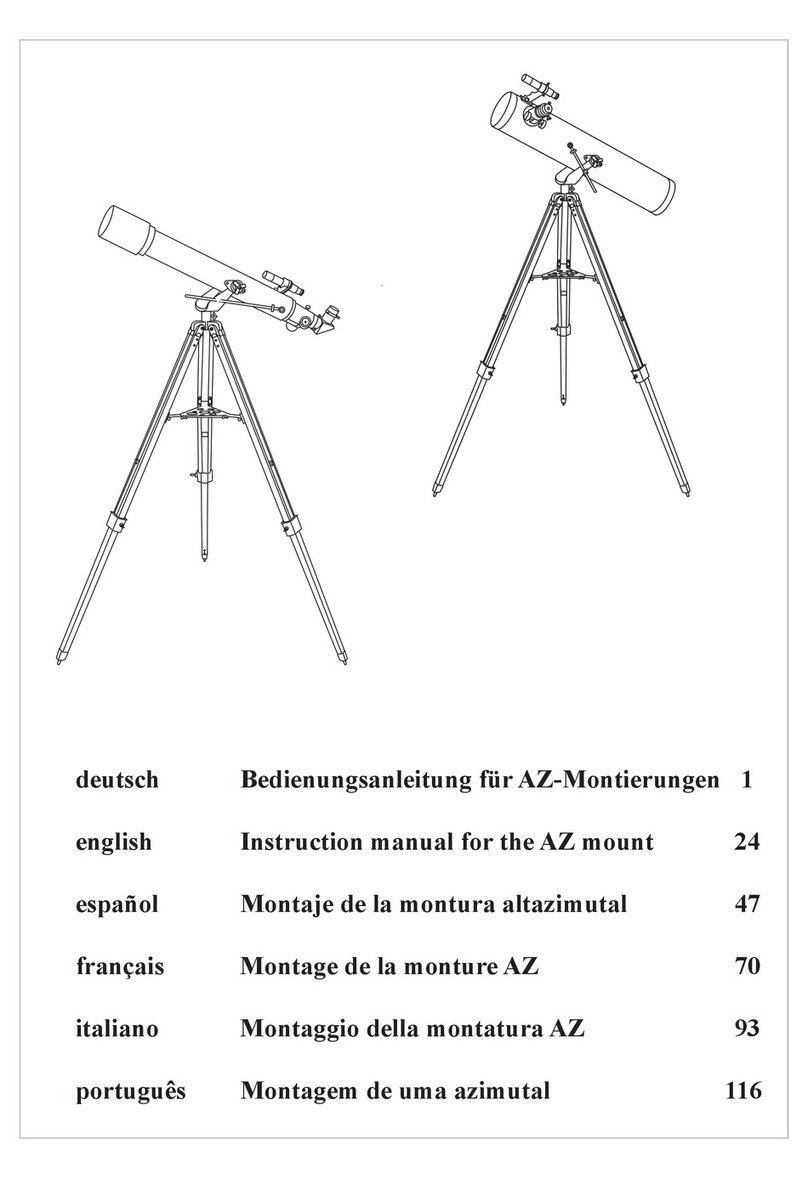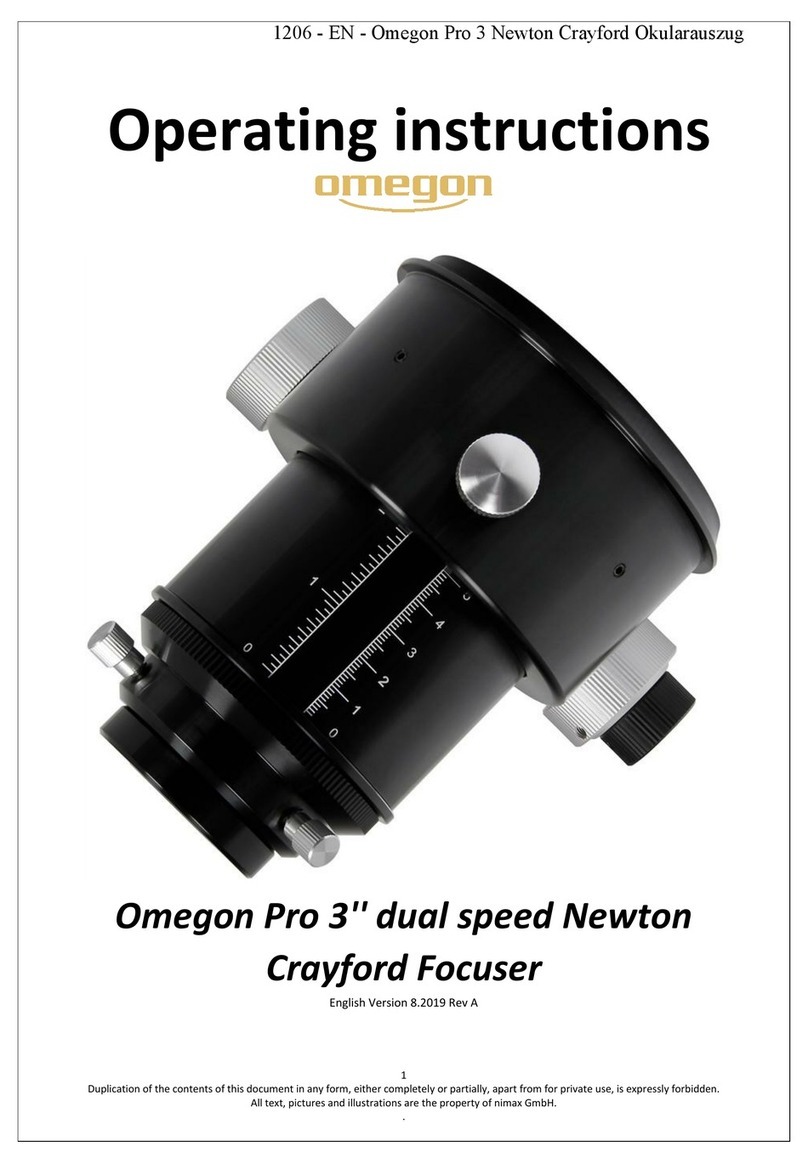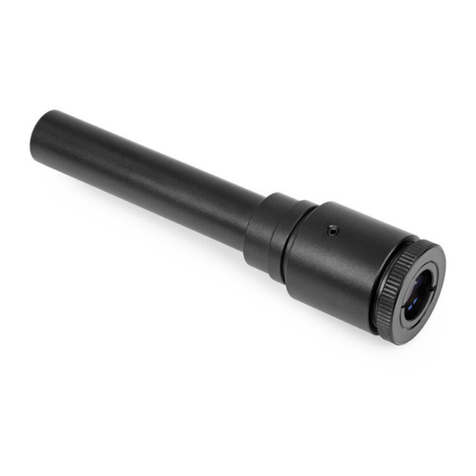
Any form of reproduction of the entire contents of this document or parts thereof beyond the private use is strictly prohibited.
Subject to alterations and errors. All texts, illustrations and symbols are the property of nimax GmbH.
60908_EN_Instruction Manual_REV_A 2 / 4
The Omegon® Deluxe Collimating Eyepiece
Congratulations on the purchase of your Omegon Deluxe Collimating Eyepiece! With the help of this eyepiece, it is possible to
perfectly collimate your Newtonian telescope. It is also useful for collimating a refractor. SC telescopes and other Cassegrains
with a hole in the primary mirror cannot be collimated using it –these instruments should be collimated at night, by using a
star’s defocused image.
The Omegon Deluxe Collimating Eyepiece is useful for collimating both mirrors –primary and secondary –but not for
collimating the focuser. If you use your Newtonian for visual observing only, it is not necessary to collimate the focuser. Its
collimation will always be sufficiently good straight from the factory. Only if you want to do high level deep sky photography,
it is possible you may have to collimate the focuser using a special tool. Always start collimation with the secondary mirror,
and finish with the primary.
1. Secondary mirror.
1.1. Preparation. Before starting on the secondary, put
a sheet of white paper into the telescope OTA. This will
make secondary collimation easier, as you will be able
to see the outer edge of the secondary better against
the white paper than against the black inner OTA wall
(Picture 1). In the centre of the front of the secondary
holder, you can see a large Phillips screw; this screw
fixes the secondary holder in place. The three screws
around the central screw are the collimating screws
which press onto the secondary holder. These can be
Phillips or hex-head screws, but the principle is always
the same. Now slide the Collimating Eyepiece
completely into the 1.25“ opening of the focuser.
If everything is completely decollimated, you will see
something like this. The elements may be shifted
relative to each other differently from here –this
picture is only an example. The elements are:
1.2. Positioning of secondary mirror. First, loosen the
three collimation screws on the secondary holder.
After this, once the holder is loose, you can do three
different things: rotating the holder around the
telescope axis, screwing the central screw in or out to
shift the longitudinal position of the secondary and
tilting the lateral position of the holder. First, try to
move the secondary into a position directly under the
focuser. This means that the secondary appears
concentric in the lower rim of the Collimating Eyepiece.
You can check this using the white, U-shaped area,
which should appear concentric. This situation is indicated with the three arrows in Picture 3.
1. Adjustment screw 2. Focuser
3. Collimating eyepiece 4. Adjustment screw
1. Lower edge of the Collimating Eyepiece;
2. Inner OTA wall opposite the focuser –in this picture white
because of the sheet of paper;
3. Outer edge of the secondary or the secondary holder;
4. Reflected in the secondary: outer edge of the primary
mirror. Here, the view is against the sheet of paper, so the
reflection of the main mirror appears white
5. Reflected in the primary: shadow of secondary and spider.
Picture 1. Secondary with focuser.
Picture 2. Completely decollimated Newtonian.
Picture 3. Secondary mirror in correct position.
